- Kids Preschool
- About Blocks ( 막기 makgi )
- Single Knife Hand Block ( 한손날 바깥막기 hansonnal-bakkat-makgi )
Taekwondo 태권도Taekwondo Preschool
Promotion from one geup to the next can proceed rapidly in some schools, since schools often allow geup promotions every two, three, or four months. Students of geup rank learn the most basic techniques first, and then move on to more advanced techniques as they approach first dan. Many of the older and more traditional schools often take longer to allow students to test for higher ranks than newer, more contemporary schools, as they may not have the required testing intervals. View Taekwondo belt levels »

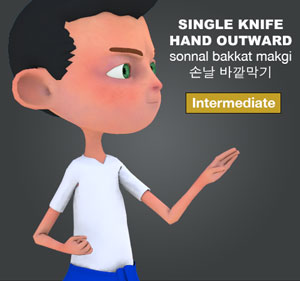
Single Knife Hand Block
( 한손날 바깥막기 hansonnal-bakkat-makgi )
Difficulty Level: Intermediate Technique: Blocks ( 막기 makgi )
The Single Knife Hand Outward Block ( 한손날 바깥막기 hansonnal-bakkat-makgi ) is an intermediate blocking technique. The hand ( 손 son ) is kept in a knife hand ( 손날 sonnal ) position to block ( 막기 makgi ) attacks to the torso. As the front arm sweeps across in an arc from the inside to the outside of the body, the back hand is simultaneously pulled back to the back hip and ready for a counter-attack such as a punch ( 지르기 jireugi ) to the opponent.
The important thing to remember is that the Single Knife Hand Outward Block ( 한손날 바깥막기 hansonnal-bakkat-makgi ) is moving in a straight line across the chest. Remember to keep the wrists ( 팔목 palmok ) straight, the blocking arm is angled at approximately 90-120 degrees, and the knife hand ( 손날 sonnal ) is as high as the shoulder. There are many small bones of the hand which need to be very carefully and slowly conditioned for safety. If done improperly, the practitioner may well break their hands ( 손 son ), wrist ( 팔목 palmok ), and/or fingers.
If the taekwondo practitioner side steps ( 옆딛기 yeop-ditgi ) or does a turning step ( 돌아딛기 dora-ditgi ) during combat, the block ( 막기 makgi ) can achieve a positional advantage relative to your opponent. Some attackers move and strike in linear fashion and the Single Knife Hand Outward Block ( 한손날 바깥막기 hansonnal-bakkat-makgi ) will throw them off when the block ( 막기 makgi ) is least expected from the side. Deploying effective footwork ( 딛기 ditgi ) involves keeping balance, closing or furthering the distance, controlling positioning, and creating additional momentum for strikes and blocks ( 막기 makgi ).
Experienced practitioners learn through repetition and muscle memory when (not just how) to launch particular blocks ( 막기 makgi ), based on the circumstances they are facing. Fights and fighters may have ebbs and flows in momentum and action that become predictable. Disrupting this flow may give the blocker an advantage.
Use of this block ( 막기 makgi ) is featured prominently in many of the World Taekwondo (WT) Poomse. Taekwondo poomse are the learning ground for real combat. As such, the muscles of the body should be lightly relaxed in order to perform the pattern with fluidity, speed and grace.
* Please see a certified Master Instructor ( 사범님 sabeomnim ) for training. Proper guidance and instructions are needed to ensure safe training.
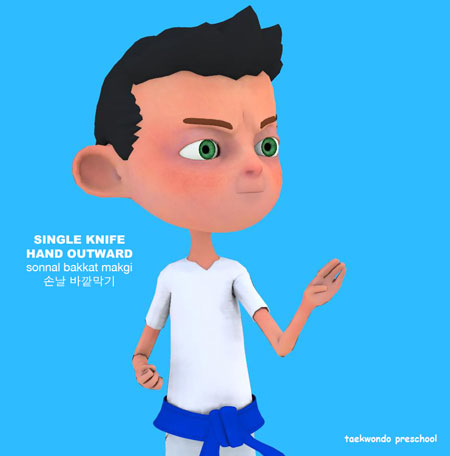
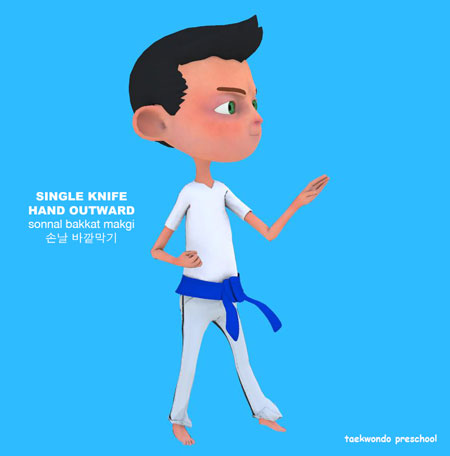


Did you know?
Taekwondo Pan American Games
The Pan American Games (also known colloquially as the Pan Am Games) constitute a major event in the Americas featuring summer and formerly winter sports, in which thousands of athletes participate in a variety of competitions including taekwondo. The competition is held between athletes from nations of the Americas, every four years in the year before the Summer Olympic Games. For more information View Taekwondo Pan American Games »
| Year | Date | Flag | City | Host Country |
| 2019 | July 26 - August 10 |  |
Lima | Peru |
| 2015 | July 19 - July 22 |  |
Toronto | Canada |
| 2011 | October 15 - October 18 |  |
Guadalajara | Mexico |
| 2007 | July 14 - July 17 |  |
Rio de Janeiro | Brazil |
| 2003 | August 13 - August 16 |  |
Santo Domingo | Dominican Republic |
| 1999 | July 23 - August 8 |  |
Winnipeg | Canada |
| 1995 | July 23 - August 8 |  |
Mar Del Plata | Argentina |
| 1991 | August 3 - August 18 |  |
La Havana | Cuba |
| 1987 | August 14 - August 16 |  |
Indianapolis | USA |
RESOURCES
This article uses material from the Wikipedia article "Pan American Games" which is released under the Creative Commons Attribution-Share-Alike License 3.0.

Quiz
Question. What is the korean terminology for Front Stance?
Front Stance is a precursor of the fighting stance ( 겨루기준비 gyeorugi-junbi ) according to some authors. Body should be relaxed in this stance ( 서기 sogi ). From the attention stance ( 차렷 charyeot ) with feet together, one foot is placed straight ahead of the other. Depending on the martial art and style, some instructors teach to step sideways slightly when moving forward.
Question. What is the korean terminology for Front Stance?
Answer you gave was: ( 뒷굽이 dwi kubi )
Your answer is wrong! You need to study more!
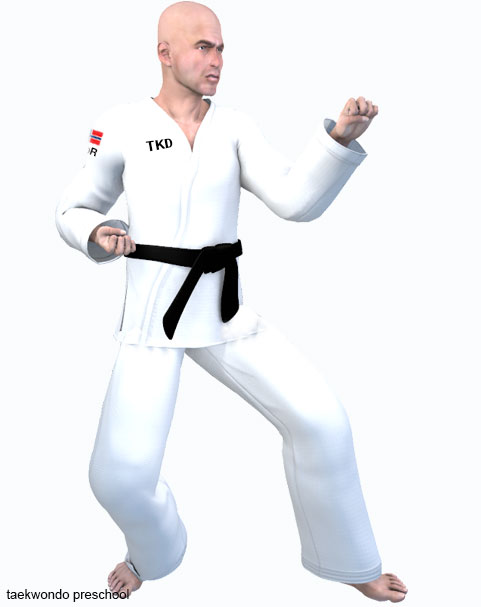
Back Stance ( 뒷굽이 dwi kubi ) is specifically focused on shifting weight to the back leg, as it offers much more control, and makes it easier to kick off the front leg. To perform the Back Stance ( 뒷굽이 dwi-kubi ), the body faces to the side, with the front foot facing forward and the front leg bent. The back leg is bent slightly and the foot is turned outwards perpendicular to the front foot making the letter "L" for this stance ( 서기 sogi ).
Question. What is the korean terminology for Front Stance?
Answer you gave was: ( 주춤서기 juchum sogi )
Your answer is wrong! You need to study more!

The Horse-Riding Stance ( 주춤서기 juchum-sogi ) is a beginner stance ( 서기 sogi ) generally used to practice punches ( 지르기 jireugi ) and blocks ( 막기 makgi ). It is similar to the Ready Stance ( 기본준비 junbi ) but the feet are placed much wider, about two-foot length's apart. Also, the knees ( 무릎 mureup ) are deeply bent and the shins ( 정강이 jeonggangi ) should be kept slightly perpendicular to the floor.
Question. What is the korean terminology for Front Stance?
Answer you gave was: ( 앞굽이 ap kubi )
Your answer is correct! Great Job!

Front Stance ( 앞굽이 ap-kubi ) is one of the most important techniques to learn when starting taekwondo as a beginner. The distance between the inside edges or namely the Reverse Foot Blade ( 발날등 balnaldeung ) of both feet should be between one to two fists apart and is about 4 to 4 one-half foot-length from origin. Rear toes are turned outward about 30 degrees and the body is also naturally angled at 30 degrees or facing straight forward depending on the upper body technique.
Question. What is the korean terminology for Front Stance?
Answer you gave was: ( 앞서기 ap sogi )
Your answer is wrong! You need to study more!

The Walking Stance ( 앞서기 ap-sogi ) is a beginner stance ( 서기 sogi ) that is used to approach or retreat in combat and patterns ( 품새 poomse ). Feet should be maintained approximately 3 foot-length from origin. To maintain a solid base, the front foot is facing straight forward and the back foot is 30 degrees to aid balance. Use of this stance ( 서기 sogi ) is featured prominently in many of the World Taekwondo (WT) Poomse.
Question. What is the name of Taegeuk #2 in Korean?
Taegeuk 태극 (in World Taekwondo (WT)) refers to a set of poomse 품새 used to create a foundation for the teaching of taekwondo. A poomse or form is a detailed pattern of defense-and-attack motions and techniques used in traditional martial arts. Each taegeuk form symbolizes a specific state thought to be indicative of the belt the student currently holds, and is represented in World Taekwondo (WT) by trigrams similar to those found in the four corners of the South Korean flag.
Question. What is the name of Taegeuk #2 in Korean?
Answer you gave was: Yi Jang
Your answer is correct! Great Job!
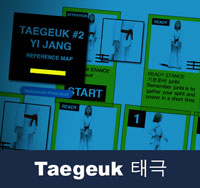

The associated trigram of this poomse represents the Lake. Also, related to the symbol is South East and the relationship of the youngest daughter. The movements of this Taegeuk are aimed to be performed believing that man has limitations, but that we can overcome these limitations. The Lake and its water symbolize the flowing and calm nature of the martial artist.
Question. What is the name of Taegeuk #2 in Korean?
Answer you gave was: Sam Jang
Your answer is wrong! You need to study more!


This trigram represents Fire. Related to this symbol is also East and the relationship of the Second Daughter. Fire contains a lot of energy. The symbol behind the fire is similar to the symbolism of the water in that both can aid and both can destroy. This form is intended to be performed rhythmically, with some outbursts of energy to reflect fire's rhythmic and energetic dualism.
Question. What is the name of Taegeuk #2 in Korean?
Answer you gave was: Il Jang
Your answer is wrong! You need to study more!
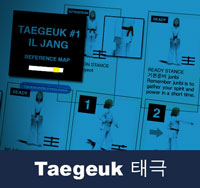

The general meaning of this form and associated trigram is Yang, which represents Heaven and Light. Also, this trigram has a relationship to South and Father. The first Taegeuk form is the beginning of all poomses, the "birth" of the martial artist into Taekwondo. This poomse should be performed with the greatness of Heaven.
Question. What is the name of Taegeuk #2 in Korean?
Answer you gave was: Chil Jang
Your answer is wrong! You need to study more!
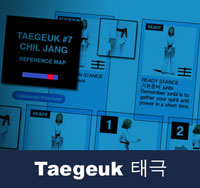

The trigram associated with this poomse represents a Mountain. Also, it represents the northwest and youngest son. The symbolism behind the mountain is the indomitable and majestic nature that all mountains possess. This poomse is intended to be performed with the feeling that all movements are this majestic due to their unconquerable nature.
Question. What is the korean terminology for Ready Stance?
Ready Stance refers to the most common ready position used in taekwondo training. The stance ( 서기 sogi ) is performed by standing with the feet one foot-length from origin apart, measured from the inside edge or namely the Reverse Foot Blade ( 발날등 balnaldeung ) of the feet. The arms are slightly bent and the fists held tightly about one fist size apart just below the belly button and the fists should be a fist size away from the body.
Question. What is the korean terminology for Ready Stance?
Answer you gave was: ( 주춤서기 juchum sogi )
Your answer is wrong! You need to study more!

The Horse-Riding Stance ( 주춤서기 juchum-sogi ) is a beginner stance ( 서기 sogi ) generally used to practice punches ( 지르기 jireugi ) and blocks ( 막기 makgi ). It is similar to the Ready Stance ( 기본준비 junbi ) but the feet are placed much wider, about two-foot length's apart. Also, the knees ( 무릎 mureup ) are deeply bent and the shins ( 정강이 jeonggangi ) should be kept slightly perpendicular to the floor.
Question. What is the korean terminology for Ready Stance?
Answer you gave was: ( 기본준비 junbi )
Your answer is correct! Great Job!
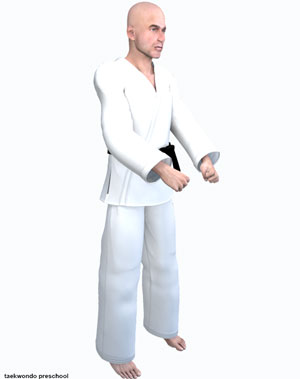
Ready Stance ( 기본준비 junbi ) is performed by standing with the feet one foot-length from origin apart, measured from the inside edge or namely the Reverse Foot Blade ( 발날등 balnaldeung ) of the feet. The arms are slightly bent and the fists held tightly about one fist size apart just below the belly button and the fists should be a fist size away from the body. The stance ( 서기 sogi ) is one of the most important techniques to learn when starting taekwondo as a beginner.
Question. What is the korean terminology for Ready Stance?
Answer you gave was: ( 앞굽이 ap kubi )
Your answer is wrong! You need to study more!

Front Stance ( 앞굽이 ap-kubi ) is one of the most important techniques to learn when starting taekwondo as a beginner. The distance between the inside edges or namely the Reverse Foot Blade ( 발날등 balnaldeung ) of both feet should be between one to two fists apart and is about 4 to 4 one-half foot-length from origin. Rear toes are turned outward about 30 degrees and the body is also naturally angled at 30 degrees or facing straight forward depending on the upper body technique.
Question. What is the korean terminology for Ready Stance?
Answer you gave was: ( 앞서기 ap sogi )
Your answer is wrong! You need to study more!

The Walking Stance ( 앞서기 ap-sogi ) is a beginner stance ( 서기 sogi ) that is used to approach or retreat in combat and patterns ( 품새 poomse ). Feet should be maintained approximately 3 foot-length from origin. To maintain a solid base, the front foot is facing straight forward and the back foot is 30 degrees to aid balance. Use of this stance ( 서기 sogi ) is featured prominently in many of the World Taekwondo (WT) Poomse.
There are five tenets defined in the International Taekwondo Federation (ITF) and several more in World Taekwondo (WT).
Courtesy ( Ye Ui / 예의 ): "Showing courtesy to all, respecting others, having manners as well as maintaining the appropriate etiquette at all times, both within and outside the dojang (도장) (designated training area)." View Taekwondo Tenets »
RESOURCES
This article uses material from the Wikipedia article "List of Taekwondo Techniques", which is released under the Creative Commons Attribution-Share-Alike License 3.0.








